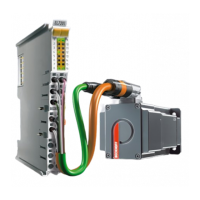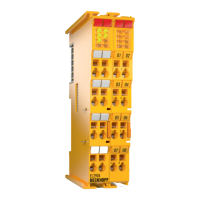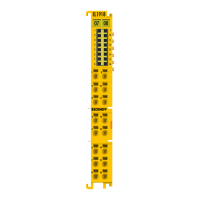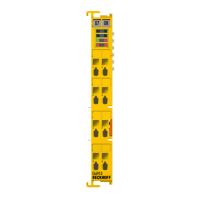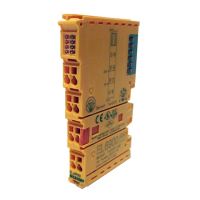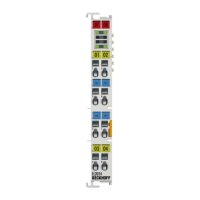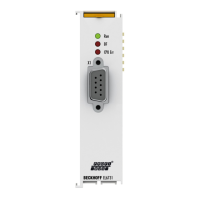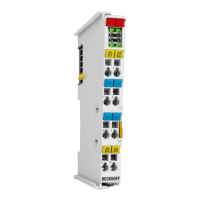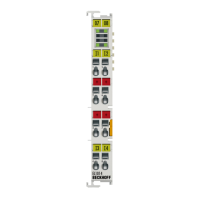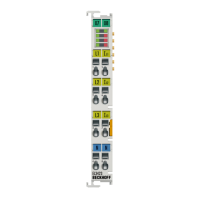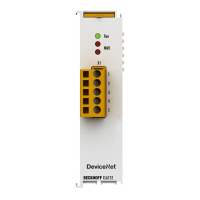Product overview
EL70x1 23Version: 4.4
2.5 Technology
The EL7031 and EL7041 Stepper Motor terminals integrate a compact Motion Control solution for stepper
motors up to 200W in a compact unit.
Stepper motor
Stepper motors are electric motors and are comparable with synchronous motors. The rotor is designed as a
permanent magnet, while the stator consists of a coil package. In contrast to synchronous motors, stepper
motors have a large number of pole pairs. In a minimum control configuration, the stepper motor is moved
from pole to pole, or from step to step.
Stepper motors have been around for many years. They are robust, easy to control, and provide high torque.
In many applications, the step counting facility saves expensive feedback systems. Even with the
increasingly widespread use of synchronous servomotors, stepper motors are by no means "getting long in
the tooth". They are considered to represent mature technology and continue to be developed further in
order to reduce costs and physical size, increase torque and improve reliability.
The development of the EL7031 and EL7041 EtherCAT Terminals for the Beckhoff EtherCAT Terminal
system opens up new application areas. Microstepping and the latest semiconductor technology offer many
advantages:
• smoother operation
• avoidance of resonance
• reduced energy consumption
• lower thermal load on the motor
• minimum electromagnetic emissions
• long cable lengths
• simpler handling
• reduced size of the power electronics
• simple integration into higher-level systems
• integrated feedback system
Two stepper motor terminals for optimum performance
The EL7031 and EL7041 Stepper Motor terminals differ in terms of performance.
EL7031
With a size of only 12 mm, the EL7031 [}16] covers the lower performance range. The supply voltage can be
up to 24 V
DC
. The device is designed for simple integration into the 24 V
DC
control voltage system. With a
peak current of 1.5 A per phase, a large number of small drives and axes can be supplied.
EL7041
The EL7041 [}19] offers higher performance comparable to that of small servo drives. With a peak current of
5 A, the EL7041 can generate an impressive torque of 5Nm in conjunction with a standard stepper motor,
for example. The supply voltage of up to 50 V
DC
enables high speeds with good torque and therefore high
mechanical output (up to about 200 W). The EL7041 has an integrated incremental encoder interface for
connecting all drive cables, although it is still only 24 mm wide.
Both stepper motor terminals provide two controlled sine/cosine currents. 25 kHz current control enables
smooth current output without resonance. Highly dynamic, low-inductance motors run just as well as stepper
motors with small rotor mass. The current resolution is 64 steps per period (64-fold microstepping). The
standard motor with a 1.8° step angle runs very smoothly and can be set to up to 12,800 electronic positions
per turn. Experience shows that approx, 5,000 positions are realistic in terms of the mechanics.
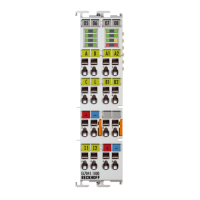
